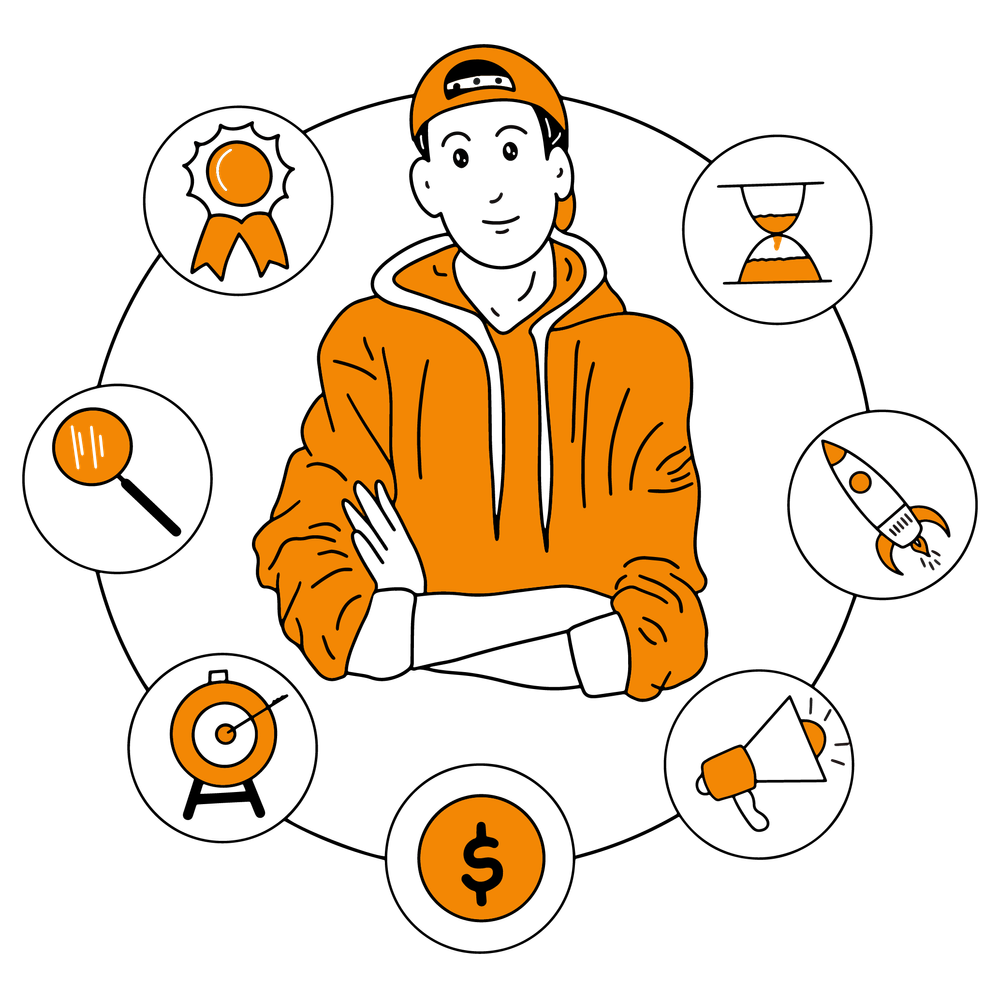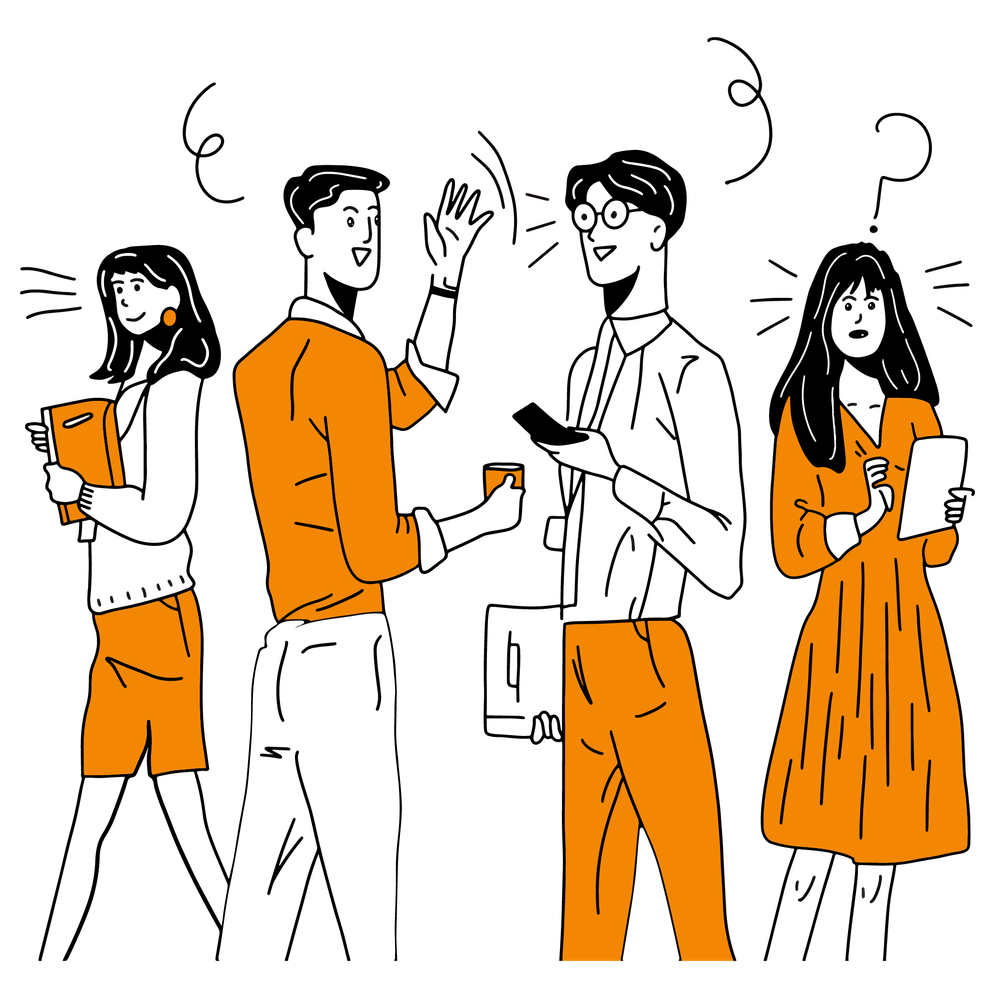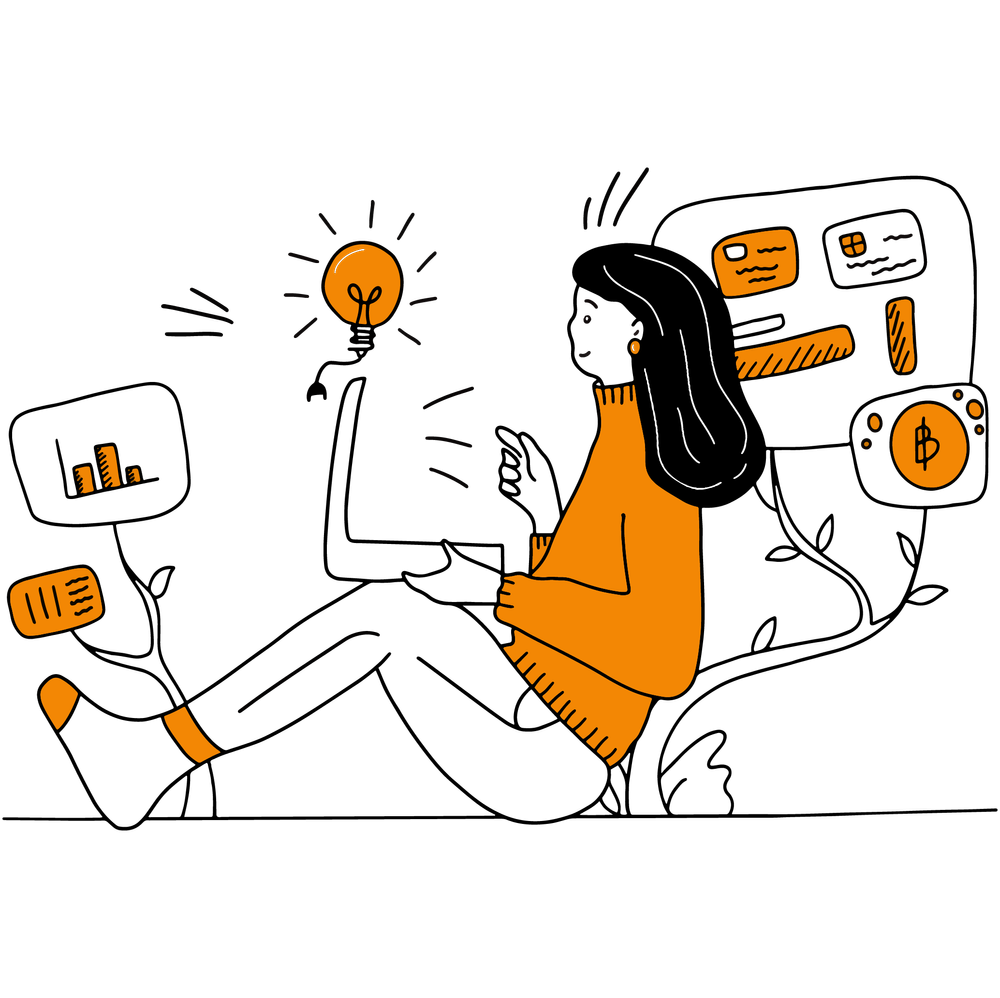Illustrations in apps and websites are always relevant. Why use drawn images, when it's appropriate, what are the pros and cons? Pay, draw yourself or take for free? We'll talk about that today. + Bonus Top 15 resources with free illustrations.
Illustrations can't be called a trend - they seem to have always been there. Starting with cave paintings. It is just that with the advent of online resources, drawings have migrated into the digital space and acquired new meanings, meanings and purposes.
And we can take advantage of the opportunity to apply illustrations to our projects. You need an original visual, choose illustrations. You need to show something that a photo won't - choose illustrations. You want to hit the color palette exactly and photos can't do it - choose illustrations.
It's a way to do beautifully, effectively, and efficiently.
It's an opportunity to create a schematic explanation of the process of a hypothetical or non-existent situation in the real world.
This is a great solution when the customer has no photographic material, and they don't want to take stock photos that everyone is accustomed to.

Pros and cons of illustrations in web design
The obvious advantage is the ability to depict literally anything. Any fantastic picture and in any style. The more so now, you don't even have to think about it yourself, because neural networks are getting smarter every day, and they don't even draw extra fingers for people anymore. We wrote about them in a separate article.
The drawing can be easily adapted to the company's corporate style, you can make it the desired shape, if you have the original markup.
There are no restrictions. Any formal niche can be made fascinating by decorating the site with interesting illustrations. Here's a picture of a car service. Traditionally it's cars-tires-tools. It's already boring. And if it's cute little animals in suits of supermen save your car from breakage? Or the car would not just be a photo, but a chic stylish graphic, maybe monochrome. It makes a difference, doesn't it?
Drawing has the superpower to breathe life into even the most boring cases and objects. It all depends on your imagination. You can present the product in a fresh and non-trivial way and stand out from the competition.

Maximum tolerance is another big plus of drawings. If you look at Google people, you can't determine their race, age, weight or even gender at all. And this is your chance to reach a huge target audience, not offend anyone and give everyone in the CA a character they can associate themselves with. That's why large corporations use it everywhere.
It's worth mentioning that here we're mainly talking about pictures, which are used instead of the customary photographic material. But an illustration is also hand-drawn navigation elements, icons, uniting blocks, strokes and elements, and author fonts. Such little things turn a dry design into a soulful one, add humanity and coziness.

Photo or illustration?
There will be a comparison. Why and when illustration wins over photography and when not at all.
Price. If a picture is not drawn by Banksy, it often comes out cheaper than a photo. I'm talking, of course, about custom images. You don't need apparatus, locations, models and props for a picture. And it's more convenient to make edits, and that's time/money too. And if the photo shoot is a failure, it's very difficult to fix. Therefore, all other things being equal, illustrations often win here.
Originality. It's hard to take really unusual, eye-catching photos. Again, it's a question of price, too. But it's also generally hard to come up with a bicycle in many standard niches. Also, your pictures will definitely be original and unique. Many firms even build their image on drawn mascots, like Monobank, for example. And that's a thing of theirs that can't be taken away. Scarlett Johansson's face might work, too, but even she can't beat a cute cat.
Ease of implementation. It often happens that a suitable photo is just difficult to find. The client has a lot of requirements for exactly what should be there. He specifies both the location of details and the characters' hair, and then it turns out that they don't have "not enough eye contact" or something like that. Plus to such a task, you have to find a photo that fits the design and the palette. Of course, you're unlikely to find such photos in stock. And taking pictures is long and expensive. The illustration will save you in this matter. Any TK can be done by an experienced illustrator. Even seven perpendicular red lines, two of which are drawn in green, one in transparent, and one in the shape of a kitten. If you know what we mean)
Design integrity. You can process the photo and bring the design to perfect style. But it's easier to do it with a picture. This is especially common for social media and blog design. Graphics in most cases will look more organic and holistic. You can combine photos with illustrations, that's how it works too.
When does an illustration not work?
- If you need to show a physical product. The customer has to see it, not imagine it. Although you can add an extra schematic instruction or something here, too.
- If you need to show an expert/selebrity/personality. Sure, the band Gorillaz has proven that cartoons can replace people. But that's in the creative sphere. In many situations, you want to look into the eyes of the person you're about to confide in.
- If the customer is against it. There's nothing you can do, even if you show that there are different styles.

Stocks with illustrations
Self-drawing has a lot of advantages. This is an original style, and the field for imagination, and branded chips that no one takes from the stock. But wasting a specialist's time on standard solutions - it is not feasible. In addition, more often it is the work of a single artist, not the designer.
Yes, this is cool. But it is expensive. And if the project requires illustrations instead of photos, the customer often simply do not have the budget to shoot. And for drawing, respectively, will not.
Okay, let's consider stock images then. To pay or not to pay? Taking paid illustrations at stock sites is a good thing. And the support of artists, and rarer solutions, and a much wider range of choices. But it doesn't guarantee 100% originality. Only custom illustrations with ownership buyout can give you the assurance that only you will have one. Or give you the right to sue the plagiarists. If your plans are not that serious and budgets, then take the free items, they are not worse.
There are literally tens of thousands of cool packages of illustrations on stock. And many of them are even free. The pictures in this article are taken from iconscout's free illustration section.
Here's our selection of the top resources:
- Mixkit - here the drawings are divided by theme. Absolutely free you can take a real masterpiece in your project - a lot of non-standard directions and styles.
- IconScout - giants like Disney, Amazon, Netflix, Spotify and Uber get their elements from here. If you want to make products at their level, use it. There are not only illustrations, but also other useful stuff: plugins, icons, animations, 3D graphics.
- Pictor is laconic drawings on the office theme. Nothing extra.
- Absurd Design - an original absurd style which saves you when you get bored with the typical renditions. Most of the pictures here are paid, but there are plenty of free ones, too. In any case, this is not a style that will suit any project and a lot of these illustrations are not needed.
- Sapiens - here you don't just take an illustration, you create it in a constructor. It's a dangerous platform that pulls you in. You can play with the parameters for a long time, it's fascinating.
- Drawkit is a base worth subscribing to because there are updates and newsletters every week. There is an option to pay for a package, but there are plenty of free options as well.
- Isometric is a good resource for those who design voluminous projects. There are a lot of directions, but they are all in the same style. For information portals, online stores and aggregator sites this is a great solution.
- Streamline - a huge number of trendy solutions, there are paid and free packages.
- Open Peeps - a huge plus of this resource is that you can take illustrations to commercial projects for free and without attribution.
- Shapefest - here you can find pictures with different textures, choose according to the theme of your product and look for appropriate solutions.
- Ouch! - Note that you have to leave a link to the site when you use the pictures. But you get access to the elements created by the best illustrators from Dribbble.
- ls.graphics - cool pictures are free, but you have to link to the license too.
- Freepik - you already know this stock. You take photos and fonts here. But there are a lot of illustrations. And also icons, backgrounds, templates, vector graphics and other cool free stuff.
- Avatarz.design - this service helps you create drawn avatars. Good for generating virtual assistants, story heroes, characters.
- Indian Doodle Illustration Pack - a portal with illustrations exclusively for digital projects. The style is in the best traditions of India. Very appropriate for the support call center of an international company.
Of course, there are illustrations at the legendary Unsplash, Pixabay, and Pexels. But we don't include them in our top list because they are so popular that some pictures have already been used hundreds of times by everyone. If you want to make an original project, dig deeper. You don't want to jeopardize your reputation and be a designer who makes pop.

How to incorporate it into a project
Under any circumstance, you need to have a sense of style, understand how the image and palette work in terms of marketing, be able to emphasize the merits.
The illustration should be organic, emphasize the message of the site, reinforce the benefits of the offer and create the right mood. It is important not to make a serious resource comical because of ridiculous drawings. And it is also important to fit the elements clearly and conveniently.
You need to study color theory, UX/UI basics and design tools to bring the project to a state of integrity. Study, train your eyesight, look for good resources with drawings and try to figure out what looks good in them and why. You can't do without practice - you have to try, then it will be clearer. Do you want to master the intricacies of craftsmanship faster? You know what to do. Enroll in the "UX/UI Legend" online course.
